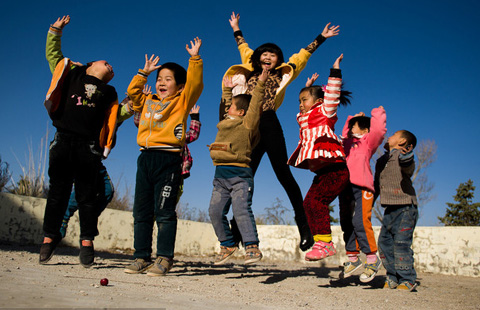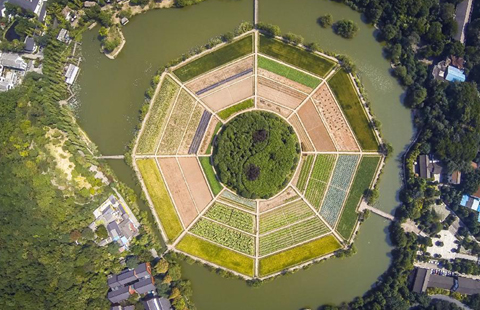Major hydroplant begins operation in power-thirsty Tibet
Updated: 2014-11-24 10:27
(Xinhua)
|
||||||||
 |
|
The first generating unit of Zangmu Hydropower Station, Tibet's largest hydropower station, went into operation on Nov 23, 2014.[Photo/Xinhua] |
LHASA - Tibet's largest hydropower station became partly operational on Sunday, harnessing the rich water resources of the Yarlung Zangbo River to develop the electricity-strapped region.
The first generating unit of the 9.6 billion yuan ($1.5 billion) Zangmu Hydropower Station, which is positioned over 3,300 meters above sea level on the "roof of the world", went into operation Sunday afternoon with five other generating units due for completion no later than next year.
The huge project, which straddles the middle reaches of the roaring Yarlung Zangbo River, will have a total installed capacity of 510,000 kilowatts upon completion. It is designed to generate 2.5 billion kilowatt hours of electricity annually.
Official statistics show that Tibet's per capita electricity consumption in 2013 was slightly over 1,000 kilowatt hours, less than one third of the national average.
"The hydropower station will solve Tibet's power shortage, especially in the winter," said Liu Xiaoming, from the State Grid's Tibet Electric Power Co.
According to Tibet's development and reform commission, as of October 2014, the region's installed power generating capacity was 1.48 million kilowatts.
Tibet has annual water resources totaling 448.2 billion cubic meters, with potential water power resources reaching 201.36 million kilowatts. It holds nearly 30 percent of the nation's total water power resources.
The region has strived to protect the environment throughout construction.
"The hydroplant is a good example of clean energy development," said chairman of the Tibetan regional government, Losang Jamcan.
A total of 320 million yuan has been invested in the Zangmu hydroplant project to build environmental friendly facilities such as sewage treatment plants, garbage recycling stations and fish protection stations.
"The Yarlung Zangpo River requires much higher protection standard than any other rivers in China, and the experience of Zangmu station may be learnt by other hydropower projects in Tibet," said Bo Lunzhang, from the regional environmental protection bureau.
- Three Gorges project generates 800b kWh electricity
- Xiangjiaba hydropower station starts operating
- China's second-largest hydropower station in full operation
- Throughput of Three Gorges Dam hits record high
- China to reform pricing system for hydropower
- 6th China-built hydropower dam in Cambodia starts operation

 Mascots from Olympic, Paralympic games arrive in Rio
Mascots from Olympic, Paralympic games arrive in Rio
 China's boxer Zou Shiming defeats unbeaten Thai
China's boxer Zou Shiming defeats unbeaten Thai
 Mountains echo to the sound of music
Mountains echo to the sound of music
 Chinese modern dance makes debut in Malta
Chinese modern dance makes debut in Malta
 Chocolate warriors with Christmassy characteristics
Chocolate warriors with Christmassy characteristics
 Trending: Panda beating video triggers outrage
Trending: Panda beating video triggers outrage
 Baidu introduces smart bike
Baidu introduces smart bike
 Culture Insider: 7 things you may not know about Minor Snow
Culture Insider: 7 things you may not know about Minor Snow
Most Viewed
Editor's Picks

|

|

|

|

|

|
Today's Top News
China, Pacific island nations boost ties
Media reveals aircraft carrier base spying case
Chinese newspaper, magazines punished
China's interest rates cut to bolster growth
Kekexili applies for world heritage
Banner year for US, NYC real estate investment
Obama takes executive action on immigration
Strong earthquake hits SW China
US Weekly

|

|








